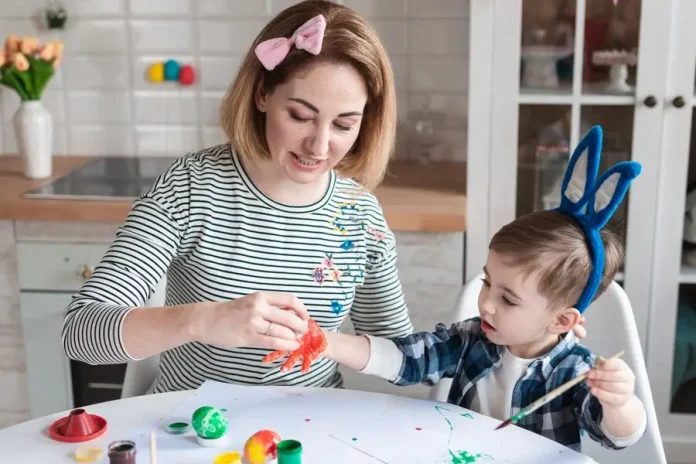Our brain is like a powerful computer that controls how we think, feel, and act. Just like software can be updated to work better, our brains can also be trained to learn new behaviors and unlearn unhelpful ones. This is where ABA Therapy (Applied Behavior Analysis) comes in. It uses proven strategies to help people, especially those with autism, change behaviors in a positive and meaningful way.
What Is ABA Therapy?
Applied Behavior Analysis is a science-based method that helps improve specific behaviors such as communication, social skills, reading, and academics. It’s widely used for people with autism, but it also helps individuals with other behavior challenges. The goal is to reinforce good behaviors and reduce those that are harmful or interfere with learning.
How the Brain Learns Behaviors
Our brain learns behaviors through something called “neuroplasticity.” This means the brain has the ability to change and grow by forming new connections between brain cells, or neurons. When we repeat an action, these connections become stronger. That’s why habits form—and why practicing the right behaviors can lead to lasting change.
Reinforcement and the Brain’s Reward System
In ABA Therapy, positive reinforcement is key. This is when a behavior is followed by a reward, like praise or a favorite activity. The brain releases a chemical called dopamine, which makes us feel good. Over time, the brain connects the positive feeling with the behavior, making it more likely to happen again.
Breaking Down Complex Skills
ABA breaks complex behaviors into smaller, manageable steps. This is known as “task analysis.” For example, teaching a child to brush their teeth might involve steps like picking up the toothbrush, putting on toothpaste, and brushing for 2 minutes. Each step is taught one at a time, making it easier for the brain to process and remember.
How Neural Pathways Are Strengthened
When a person repeats a positive behavior regularly, the brain forms a stronger pathway for it. It’s like building a road—at first, it’s rough and slow, but with practice, it becomes smooth and easy to travel. ABA Therapy helps by creating consistent learning opportunities, which speed up the building of these brain pathways.
Virtual ABA Therapy and Brain Engagement
With the growth of online services, virtual aba therapy has become more common. It uses video calls, interactive games, and digital tools to deliver the same strategies from home. Even in a virtual setting, the brain is actively learning and making connections. Studies show that virtual therapy can be just as effective, especially when guided by trained professionals and supported by family members.
The Role of Repetition in Brain Training
Repetition is essential in brain training. The more often a behavior is repeated, the stronger the brain connection becomes. ABA sessions often include repeated practice, but in fun and engaging ways. For example, a therapist might use songs, stories, or play to teach the same skill over and over without making it feel boring.
The Importance of Immediate Feedback
In ABA, feedback is given right away—this is called “immediate reinforcement.” The brain learns best when it can connect a behavior with a result quickly. For instance, if a child says “thank you” and gets a smile or a sticker right after, the brain links that behavior with something positive.
How ABA Helps With Emotional Regulation
ABA also supports emotional development. People with behavior challenges often struggle to express feelings or manage emotions. Therapists use ABA techniques to teach self-control, patience, and communication. Over time, the brain becomes better at handling stress or frustration, leading to healthier behavior patterns.
Parental Involvement and Brain Learning
The brain learns faster when learning is supported at home. Parents play a big role in ABA Therapy by continuing lessons outside of sessions. This helps the brain get even more practice in real-life situations, speeding up the learning process.
Using ABA to Build Social Skills
Social interaction can be difficult for some individuals. ABA helps by teaching skills like taking turns, making eye contact, and starting conversations. The brain starts to associate these actions with positive outcomes, like making friends or receiving praise, which encourages more social interaction.
Why Patience and Consistency Matter
Brain change doesn’t happen overnight. Just like learning a new language or instrument, it takes time. ABA works best when done regularly and with patience. Over time, the brain adjusts, and behaviors improve in a long-lasting way.
Measuring Brain-Based Progress
ABA is data-driven, meaning progress is tracked over time. Therapists measure how often a behavior happens, how quickly it improves, and what methods work best. This helps personalize therapy and makes sure the brain is learning in the most effective way.
Conclusion
Training the brain through ABA Therapy is based on real science and years of research. It uses positive reinforcement, repetition, and feedback to build new skills and habits. Whether done in person or through virtual ABA therapy, the brain is always growing and adapting. With the right support, meaningful behavioral change is truly possible.

